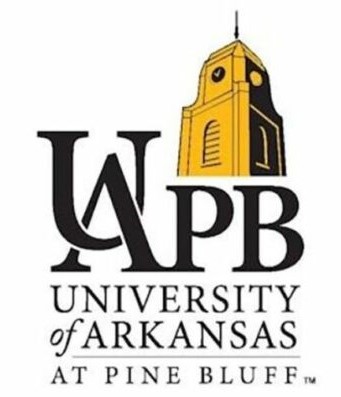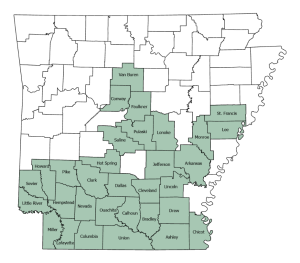
The University of Arkansas at Pine Bluff (UAPB) Small Farm Program’s Sustainable Forestry and Land Retention Program – also known as the “Keeping it in the Family Program (KIITF) – is seeking new participants, according to Kandi Williams, the program’s outreach coordinator. The initiative provides educational resources and technical assistance to landowners to protect and retain their family land for future generations.
Williams recently sat down with staff of the communications office at UAPB’s School of Agriculture, Fisheries and Human Sciences for a Q&A interview about the program.
The program’s name “Keeping it in the Family” is catchy. But what exactly does that mean?
Williams: “The concept of the Sustainable Forestry and Land Retention Program was developed in 2012 to equip landowners with the resources needed to manage and retain their land through sustainable forestry and conservation practices. In 2016, UAPB launched the Keeping it in the Family Program to help landowners gain access to important U.S. Department of Agriculture (USDA) conservation programs, learn about best forestry management practices and receive resources and technical support to prevent involuntary land loss due to challenges associated with heirs’ property.
The program helps landowners manage their land and build intergenerational wealth and stability through land retention and forest land management. KIITF is funded through various funding sources and works closely with the Center for Heirs’ Property Preservation as part of a USDA grant project.”
Who is eligible to participate in the program? Is eligibility determined by county?
“We serve all forest landowners seeking assistance through a holistic farming approach regardless of their race, economic or social background. In 2016, KIITF began serving seven counties. We have expanded our services to help forest landowners throughout the state.”
What kind of outreach assistance might landowners receive?
“The KIITF team and partners provide one-on-one assistance, site-visits, forest management education, technical assistance and clustering opportunities. We also provide education and free consultation on heirs’ property, estate planning, legal assistance and implementing conservation practices.
The landowners receive educational resources and technical assistance on heirs’ property prevention and resolution, estate planning, business structures, succession planning and new and emerging markets. They can also count on technical support with obtaining farm numbers and becoming eligible for conservation programs through the Natural Resources Conservation Service (NRCS). They learn about simple deeds, various land issues, implementing forestry conservation practices, writing management plans and record keeping.”
Does it cost money to participate in KIITF programing? If not, why does UAPB provide these services?
“There is no cost to participate in the KIITF program. UAPB provides education, resources, outreach and service programs to help landowners reach their maximum income potential and enhance their quality of life. It is our mission to help landowners retain their land and build intergenerational wealth and healthy communities through agriculture and working forestry.”
What is the purpose of site visits?
“During a site visit, the KIITF team and partners visit the land in question and discuss the landowner’s goals. They assess the property, identify natural resource concerns and develop a management plan. Our team members have very diverse backgrounds, which helps them reach out and meet the landowners where they are. They then develop a roadmap to help the landowner accomplish their land management goals.”
I have seen flyers for KIITF education sessions. What can participants learn during these sessions?
“The KIITF education sessions provide landowners with resources to help with estate planning, succession planning (forest and personal), and scheduling conservation practices – for example, selecting quality seedlings, controlling invasive pests and unwanted tree species, tree thinning, spraying, prescribed burns, harvesting, site preparation and forest regeneration.
In terms of production management, they learn about conservation, soil health, ecosystems and healthy land and trees. Other topics include wildlife management, marketing and tree clustering opportunities.
During previous workshops, participants have gained knowledge about managing healthy forests. Our foresters, conservationists, attorney and guest speakers have shared a wealth of information on applying for USDA conservation programs, how to obtain a farm number, learning to request multiple bids before harvesting timber or hiring a consultant. Our landowners remain actively engaged once they receive the information by scheduling site-visits, contacting forestry professionals, obtaining farm numbers, applying and implementing conservation practices, developing estate plans, writing wills, building family trees and clearing land titles.
I credit our peer-to-peer landowner committee for their assistance in landowner referrals and sharing their experience and knowledge during landowner empowerment webinars. The webinars have helped remote landowners remain engaged with our team and project partners. Our field team is also available to meet with families virtually via videoconferencing applications such as Zoom.”
Can you give an example of a KIITF success story that might encourage others to participate?
“Harvesting timber can be challenging for landowners who own small acres. It is expensive for loggers to move heavy equipment to different harvesting sites. It is extremely hard for a logger to cut 40 acres or less until there is extremely valuable timber or the mills are low on inventory. Despite this, a KIITF team member was able to help a couple of landowners in the sample area secure bids to harvest timber at the same time. This gave the landowner the opportunity to apply for conservation programs to properly manage their property.”
Is there another success story you would like to share?
“A landowner was just about to sell their property when a KIITF team member stepped in and encouraged them to apply for a conservation program. The landowner was approved for NRCS cost-share funds to implement conservation practices to enhance the land. The KIITF team and partners developed a forestry management plan and are working with the landowner to identify conservation practices needed specifically for their tract of land. They are also building a working relationship with NRCS and Arkansas Department of Agriculture – Forestry Division representatives including the district conservationist and county forester, as well as reputable vendors.”
How can I join the program?
To get involved with the KIITF Program, contact Williams at (870) 571-9428 or [email protected].









